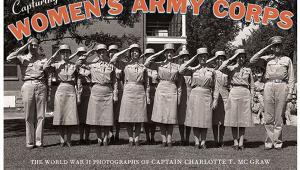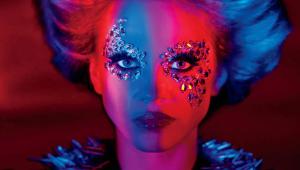Digital Imaging Books: 2009; New Books That Belong On Your Bookshelf Page 2
Perfect Digital Photography; by Jay Dickman and Jay Kinghorn; McGraw-Hill; 528 pages; $39.99; (ISBN: 978-0-07-160166-5)
The two Jays have produced a heavyweight volume that will help you produce technically better images. That’s a tall order but these are the two guys who can do it. Here, you’ll find sections like “The Viewfinder is our Canvas and Light is our Paint,” playing on their very definition of photography to take you into the world of available light and show, often with the aid of Dickman’s astonishing images, how to deal with various kinds of lighting conditions and use that knowledge to produce technically superior images. When the authors get into specific tutorials, such as on “Making Selective Adjustments,” the book’s images, design, and text come together in, can I say it, perfection.
 |
Architectural Photography; by Norman McGrath; Amphoto Books; 208 pages; $29.95; (ISBN: 978-0-8174-2455-8)
Not only is this lushly produced large format book gorgeous with each page bursting with exquisitely executed architectural images but the accompanying text turns it into a veritable short course in photographing building exteriors and interiors. There’s even an all-too-brief section on photographing architecture using digital IR photography, although maybe that’s another book waiting to be written. Norman McGrath fully embraces the new technologies and shows how to use High Dynamic Range (HDR) and stitched panoramas to create images that were simply not possible in the days of film and tilt-and-swing view cameras. His section on photographing interiors will be indispensable for the new architectural photographer and he goes into specific examples of specific
hard-to-shoot spaces, such as bathrooms.
 |
Within the Frame; by David duChemin; New Riders; 254 pages; $39.99; (ISBN: 978-0-321-60502-3)
This is a different kind of travel photography book; it is less hardcore how-to and more of a spiritual guide that combines inspiration and information about travel photography within a cultural anthropological context. Don’t let that scare you. You see, David duChemin immerses himself in the culture of the places he photographs and puts you in his hiking boots and occasional motorcycle seat to show how he works to obtain the attention-getting images that are beautifully reproduced on these pages. Combining elements of an essayist with photojournalism, duChemin invites you on a journey that’s more about capturing impressions than f/stops, providing a refreshing spin on the travel photography genre.
 |
The Art of Children’s Portrait Photography; by Tamara Lackey; Amherst Media; 128 pages; $34.95; (ISBN: 978-1-58428-240-2)
This book should serve as an inspiration for anyone who photographs kids or who would like to make a living as a children’s photographer. Sprinkled around some of the best kid portraits I’ve ever seen, Tamara Lackey introduces readers to her world with common sense tips on not only how to make the photographs but how to deal with specific personalities, such as “the performer,” plus shy and even sick kids. Among the information on cropping, posing, and the working environment, Lackey provides solid advice in a friendly manner and in few words. She fills the second half of the book with solid information on pricing, sales, and marketing, making this book an essential mini-course in learning how to photograph children creatively and make money at the same time.
 |
Digital Portrait Photography; by Steve Sint; Lark Books; 224 pages; $24.95; (ISBN: 978-1-60059-335-2)
Steve Sint is one of the smartest people photographers I’ve ever met and in this lavishly produced book he translates his warm amiability and technical expertise into a book that anyone who shoots portraits should own. What’s great about this and all of Sint’s other books is how complete they are. When talking about lighting he doesn’t just show you a picture of a light and a photo he made with it. Instead, he shows a nice lighting diagram—not just some stick figures—to show where lights are placed to produce the final image. Similarly, he uses mannequins in a series of paired exposures so you can see exactly where the light is and what the effect is. But while mannequins are easy to shoot, people are an entirely different challenge and Sint shows you some of the best posing advice I’ve read with details on not only posing the body but posing the subject’s face as well. He wraps up the book with a look at the all-important business side of portraiture.
 |
Digital Wildlife Photography; by Chris Weston; Photographers’ Institute Press (PIP); 176 pages; $19.95; (ISBN: 978-1-86108-563-4)
This book follows the example of others in the series and packs the pages with large and colorful and, in this case, spectacular wildlife images made by the author. To his credit, Chris Weston provides more detailed technical and equipment information than is typical in this series. The book has lots of useful techy bits and “field notes” that along with a better-than-normal design from PIP make this a great book for both beginning and intermediate photographers or just those shooters who would like to apply some of the techniques for photographing charging rhinos to photographing wildlife here in the good ole US.
 |
The Digital Darkroom
Photographic Multishot Techniques; by Juergen Gulbins and Rainer Gulbins; Rocky Nook; 220 pages; $34.95; (ISBN: 978-1-933952-38-3)
Since this book straddles capture and the digital darkroom, that’s where I placed it. It’s not a copycat
and offers a fresh take on capturing multiple images and putting them together in often surprising ways to produce stunning results. The book opens with a look at workflow and then dives into specifics such as super-resolution and focus-stacking techniques to achieve the ultimate depth of field. At the end of the book the authors delve into the world of enhancing microcontrast using filters and raw conversion software. Along the way the boys treat more obvious examples of multishot imagery such as panoramas and HDR but do so in an exhaustive and detailed way.
 |
Digital Photographer’s New Guide to Photoshop Plug-Ins; by Jim Zuckerman and Scott Stulberg; Lark Books; 160 pages; $24.95; (ISBN: 978-1-60059-212-6)
Combining outstanding images with an overview of Photoshop plug-ins, including third-party ones and those that are built-in, make this an outstanding handbook for photographers who are never happy with the reality that appears in front of their lens. What sets this apart from other similar books is that instead of being a mere catalog of filters and “look at this” illustrations, the authors take you inside the plug-in, feasting on the details and sharing the nitty-gritty. They show you not only how to use the software but how to extract the best results. My only criticism is that it’s too short. Maybe these guys will do a second volume.
 |
Digital Wedding Photography Secrets; by Rick Sammon; Wiley; 240 pages; $29.99; (ISBN: 978-0-470-48109-7)
This is another volume in Rick Sammon’s “Secrets” series and everything from the Mama Mia-inspired cover to the last page is chock full of tips and techniques that will help wedding shooters produce images that separate their work from the herd. While the first half of the book is about capturing wedding images, including a great shot of Sammon in a tux, wedding newbies will love his well-illustrated digital darkroom tips that comprise the second half. What’s great about this book, like all of Sammon’s other tomes, is that it is written in the same style as if he were sitting next to you at your computer explaining how to blur the background or “soften skin in an instant.” The book is well printed and illustrated with images from Sammon and a bunch of talented wedding photographers.
 |
Get the Most from Photoshop; by Simon Joinson; David and Charles; 160 pages; $24.99; (ISBN: 978-0-715-32962-7)
Despite its mildly understated title, Get the Most from Photoshop is a great read from cover to cover, filled with well-written and well-illustrated tutorials on everything from using layer masks to more advanced tricks such as removing unwanted elements, and we all want to do that from time to time but never know how. Now you do. This is what a photo how-to book should look like. It’s bursting from the seams with useful tidbits and attention-grabbing illustrations that keep you turning pages even if you just use it to learn specific tips and techniques. The last chapter is full of collage and montage tutorials, showing how to do such effects as “out of frame” and some other eye-popping montage effects.
 |
Photoshop Lightroom 2 Adventure; by Mikkel Aaland; O’Reilly; 366 pages; $44.99; (ISBN: 978-0-596-52101-1)
I don’t like Adobe’s Lightroom much but I know that many photographers do and it’s all of you who will find this book a lot more interesting than me. It’s well produced and has an easy-to-follow design that’s far better than O’Reilly’s usual offerings. This is not Mikkel Aaland’s first rodeo so he knows the ropes and eloquently shows how to get the most from your image by using Lightroom. He takes it beyond the program’s vaunted Develop module into color tuning and special effects along with my favorite chapter, “Develop Recipes from Tasmania and Iceland,” but instead of new uses for vegemite he shows a technique called “Romantic Tasmania.” Aaland’s tips for power printing, slide shows, and web applications are delivered with so much enthusiasm it inspired me to take another look at Lightroom.
 |
Printing for Digital Photographers; by Tim Daly; Photographers’ Institute Press; 176 pages; $19.95; (ISBN: 978-1-86108-528-3)
Printing with Adobe Photoshop CS4; by Tim Daly; Focal Press; 304 pages; $39.95; (ISBN: 978-0-240-81138-3)
Here are two different books by one author covering the same subject. The first is a good introduction for beginning digital imagers who want to make prints from their image files. Tim Daly manages to keep the text lively and fill the book with big colorful illustrations, making it ideal for the young photographer, a market usually overlooked by US publishers. Readers wanting something in-depth will find the second book more useful. Chock full of tips of what to do before printing, including a foray into special effects, Daly uses the second half for tutorials on printing and how to make sure what you see on the screen is what comes off the printer. The final section includes information on printing directly from the camera, ink systems, dye sublimation, and a roundup of paper stocks.
 |
 |
CMYK 2.0; by Rick McCleary; Peachpit Press; 268 pages; $49.99; (ISBN: 978-0-321-57346-9)
The heart of this book is found in Chapter 6 which contains detailed information (and I’m not just talking about a menu pull or two) about converting files to CMYK and working in collaboration with printing companies and publishers to produce the results seen on screen. The author recommends that you take the time to read the first five chapters to learn about the environment that you’ll be working in; this will ultimately help you produce better results. This is a well-reasoned book that looks at the less glamorous side of photography but does so in a manner that will help you produce
better-looking printed images. If you’ve already tried and failed, you already know that this isn’t something that is always easy to achieve. This book will help you do it.
 |
Books By “Shutterbug” Writers
Jon Canfield’s Camera RAW 101 (www.randomhouse.com/crown/amphoto.html) is a perfect storm of instructive text, real-world photographs, on-target topics, and perfect production. Here, everything works; the design is excellent, packaging is well executed, heck even the paper is topnotch. Canfield starts at the beginning with downloading files and then jumps into using the software, including all the “tabs” that have attached themselves to Adobe Camera Raw over its many versions. Then he takes you beyond the basics with monochrome conversion, automating, and advanced conversions before demonstrating the finishing touches that separate a good photograph from a great one. It should be everybody’s first book on raw image processing.
 |
In addition to his raw book, Canfield published Photodex Proshow (www.peachpit.com), a book that’s part of Peachpit Press’ “Visual Quickstart Guide” series and is a quick and easy way to learn about this software that a lot of pros, especially wedding shooters, use to market their photography.
 |
Stan Trzoniec self-published Digital Outdoor Photography (www.outdoorphotographics.com) for which our editorial director wrote a forward. It’s an easy-to-read book filled with Trzoniec’s superb photos and covers a wide range of subjects, including an introduction to the D-SLR, the use of “modern” lenses, along with all the accessories a well-equipped outdoor shooter needs. He wraps up the book with information on how to matte, frame, and display your photographs.
 |
Even before I knew him as editorial director, I was a fan of George Schaub’s monochrome photography. At PMA many years ago, he showed me black-and-white inkjet prints that rivaled the best possible silver prints yet made using techniques that emulated the best of them. His previous digital darkroom books touched on monochrome imaging but Digital Photographer’s Guide to B+W Landscape Photography (www.larkbooks.com) is his magnum opus. The production values on this large format book are superb and are enhanced by Schaub’s images along with informative text that tells the story of digital techniques applied to this classic genre. He starts with a helpful section on the language and technical details of film and digital capture, including scanning film, then moves on to the most significant section on “seeing” in grayscale, which lies at the heart of creating successful monochrome images. While clearly aimed at an intermediate-level photographer, the beginner will find plenty of information to help them appreciate monochrome imaging and more advanced users will discover that they don’t know it all.
 |
- Log in or register to post comments

















































